In the aviation world, aesthetics are more than skin deep. A clean, polished aircraft doesn’t just look professional, it reflects the quality and care behind its maintenance.
This blog’ll explore why aviation polish matters, what it does beyond gloss, and how the right aeroplane polish supports performance, preservation, and pride in aviation.
More Than Shine: The True Role of Aircraft Polish
Polishing an aircraft isn’t just about looking good on the runway. A quality aircraft polish serves several critical functions:
- Protects the airframe from UV rays, rain, pollution, and corrosion
- Minimizes drag by smoothing surface imperfections
- Preserves paint and aluminum surfaces
- Extends the life of protective coatings and decals
Using aviation polish regularly ensures cosmetic appeal and contributes to structural integrity and flight readiness.
The Difference Between Aircraft Polish and Automotive Polish
While both polish types aim to restore shine, aeroplane polish is formulated specifically for the materials used in aircraft construction such as aluminum alloys, composite materials, and aviation-grade paint systems.
Aircraft polish must be:
- Non-abrasive to avoid damaging soft metal finishes
- Silicone-free (in many cases) to comply with aviation regulations
- Weather-resistant for high-altitude exposure
- Safe for use on glass, decals, and sensors
Automotive polishes may contain fillers or silicones that leave residues or interfere with radar equipment, making them unsuitable for aircraft use.
Types of Aircraft Polish and When to Use Them
Depending on the aircraft and the desired result, there are several types of aviation polish to consider:
A. Cleaner Polish
- Removes oxidation, bug splatter, and environmental grime
- Ideal for frequent light cleanings
B. Restorative Polish
- Removes minor scratches and swirl marks
- Best for older aircraft or those exposed to harsh conditions
C. Protective Sealant Polish
- Adds a hydrophobic layer for UV and weather resistance
- Provides long-lasting gloss and protection
Each polish type serves a different purpose, and many maintenance programs use a combination to keep aircraft in peak condition.
How Polishing Improves Aerodynamics
Beyond cosmetics, polishing can also have a subtle impact on aircraft performance. A smooth, polished surface reduces friction between the aircraft and surrounding air, leading to:
- Slight improvements in fuel efficiency
- Reduced buildup of contaminants (e.g., bugs, ice)
- Easier cleaning and maintenance
While the gains are marginal, they matter in aviation, where every bit of drag reduction contributes to operational efficiency.
Best Practices for Applying Aviation Polish
To get the most out of your aircraft polish, follow these industry-recommended tips:
- Clean the surface thoroughly before applying polish
- Use microfiber cloths or foam applicators for even application
- Polish in sections to avoid uneven gloss or drying marks
- Apply in shade or controlled hangar environments to prevent streaking
- Use orbital polishers for larger aircraft surfaces for efficiency and consistency
Consistent application every few months (or as part of scheduled maintenance) keeps aircraft looking and performing at their best.
Interior Use of Aircraft Polish
Some aviation polishes are safe for interior use, especially on:
- Cockpit glass and instrument panels
- Seat metals and trim
- Stainless or aluminum galleys
Make sure to choose a product specifically labeled safe for interior aviation use, and always avoid polishing areas that require clear tactile grip or anti-glare finishes.
Aircraft Polish as Part of Preventive Maintenance
A professional-grade aeroplane polish isn’t just for show—it plays a role in regular preventive maintenance by:
- Highlighting hidden damage or corrosion early
- Reducing the risk of corrosion around rivets and seams
- Making visual inspections faster and more effective
For aircraft owners and operators, incorporating aviation polish into the maintenance cycle is both a practical and cost-saving measure.
Conclusion
Investing in the right aircraft polish is more than a cosmetic decision is an essential part of protecting your investment, maintaining performance, and upholding professional standards. Whether you’re polishing a single-engine plane or a corporate jet, the right aviation polish can deliver lasting protection, enhanced aerodynamics, and the kind of shine that turns heads on every tarmac.
Ready to keep your aircraft in top condition? Choose Super Gloss polish that’s engineered for aviation excellence.


